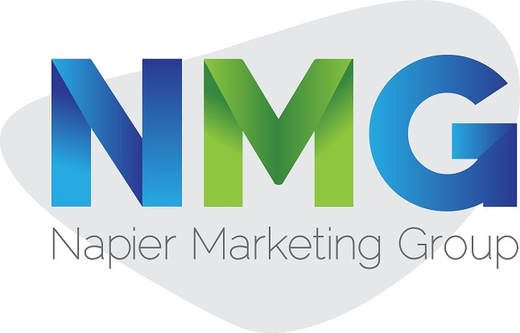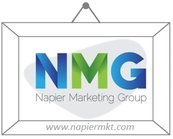Business Tips: How To Create A Successful Brand
One of the best things you can do for your business is to turn it into a brand. A well-branded business enjoys many different benefits, such as increased visibility, more customers, and greater profits. However, creating a successful brand is not easy. There are a few key tips you should know about if you want to make your brand shine.
1. Product Presentation
The first step in branding your business is to come up with a strong name. This name needs to be memorable and easily recognizable. It should also accurately reflect what your company does. If you can't think of a good name on your own, consider hiring a naming agency to help you out. Once you've done that, it's very important that your products represent your brand nicely. For example, if you sell products in glass jars - such as honey or jam - you might want to consider screen printing on glass containers as a way to promote your brand. Not only will that get your name out there, but it also allows you to go around using paper or plastic - which can be a bonus selling point if you're targeting an environmentally-friendly audience. Another example would be if you own a clothing company - make sure to use high-quality materials and do everything in your power to ensure that the finished product looks good. You can take clues from the well-established brands out there - every one of them has their brand name somewhere on their product. It can be as subtle as a tiny crocodile on the back of a shirt, or as bold as the word "Nike" plastered across a sneaker.
2. Define Your Brand Identity
Once you have a good name and some great products to represent it, it's time to start defining your brand identity. This means figuring out what your business is all about, defining the values and its mission, and making sure that all of your marketing materials reflect this. For example, if you sell eco-friendly home goods, make sure your website and social media accounts are filled with images of nature and sustainable living. You might even want to consider using recycled or upcycled materials for your packaging. The more consistent you are with your branding, the easier it will be for customers to identify your company and what it stands for. It's always better if your brand promotes those things that you truly believe in, as this will come across in your marketing materials and help to build customer loyalty.
3. Consistent Visual Identity
A big part of branding is having a consistent visual identity. This means that all of your marketing materials - from your website to your business cards - should be designed in a similar style. Doing this will help customers instantly recognize your brand, no matter where they see it. It's also important to use the same typeface and color palette throughout all of your materials. Again, taking cues from well-known brands can be helpful - Apple is a great example of a company with a very consistent visual identity. They use the same font on their packaging and in ads, they have a particular color scheme that's easily recognizable, and even their product boxes are often still wrapped around by an Apple-branded tissue paper. This level of attention to detail helps customers instantly recognize the Apple brand - it builds trust and loyalty, which is extremely important for any business.
4. Create A Backstory
Many successful brands have a unique story behind them. Just think about your favorite products - what makes them especially appealing is the fact that you know where they came from and how they were made. For example, many companies will tell their customers all about the founder's background or family history in order to build a connection with them. This can be a great opportunity for you to do something similar with your company - it will help to differentiate your business from others out there and make it easier for consumers to identify with you. You can go even further by telling stories about individual employees, showcasing what they're most passionate about, and linking this back to your brand identity somehow. On the other hand, the story can be about what inspired you to start your business, what it is that you're trying to accomplish, or even how you hope to improve the world through your brand. Of course, when doing this, it's important to be authentic and honest - if your story feels fake or forced, customers will be able to tell and they won't trust you.
5. Community Engagement
Social media is an area where you can really start building ties with customers and strengthening your brand image. You can do this by posting photos of events, sharing images of products in use (such as a woman wearing an outfit she bought from your website), responding to customer questions on Facebook and Twitter, and more. However, make sure all of these posts are well-thought-out - avoid simply regurgitating press releases or other information about your company that might be readily available on its website. Instead, try coming up with original ideas about marketing strategies that will help you to create a stronger brand image, and share these across social media sites. Creating campaigns that can be easily shared by customers helps them to become brand advocates - they'll feel more connected to your business and will be much more likely to recommend you to others. You can also strengthen ties with customers by creating a community around your brand. This might take the form of giving people the opportunity to post their own photos, sharing behind-the-scenes sneak peeks at upcoming products or events, hosting giveaways involving your brand, asking for customer opinions on new products, planning fun social media contests (such as asking Twitter followers to come up with hashtags), and more. The key here is to create an environment where customers are encouraged to engage with your company's content.
1. Product Presentation
The first step in branding your business is to come up with a strong name. This name needs to be memorable and easily recognizable. It should also accurately reflect what your company does. If you can't think of a good name on your own, consider hiring a naming agency to help you out. Once you've done that, it's very important that your products represent your brand nicely. For example, if you sell products in glass jars - such as honey or jam - you might want to consider screen printing on glass containers as a way to promote your brand. Not only will that get your name out there, but it also allows you to go around using paper or plastic - which can be a bonus selling point if you're targeting an environmentally-friendly audience. Another example would be if you own a clothing company - make sure to use high-quality materials and do everything in your power to ensure that the finished product looks good. You can take clues from the well-established brands out there - every one of them has their brand name somewhere on their product. It can be as subtle as a tiny crocodile on the back of a shirt, or as bold as the word "Nike" plastered across a sneaker.
2. Define Your Brand Identity
Once you have a good name and some great products to represent it, it's time to start defining your brand identity. This means figuring out what your business is all about, defining the values and its mission, and making sure that all of your marketing materials reflect this. For example, if you sell eco-friendly home goods, make sure your website and social media accounts are filled with images of nature and sustainable living. You might even want to consider using recycled or upcycled materials for your packaging. The more consistent you are with your branding, the easier it will be for customers to identify your company and what it stands for. It's always better if your brand promotes those things that you truly believe in, as this will come across in your marketing materials and help to build customer loyalty.
3. Consistent Visual Identity
A big part of branding is having a consistent visual identity. This means that all of your marketing materials - from your website to your business cards - should be designed in a similar style. Doing this will help customers instantly recognize your brand, no matter where they see it. It's also important to use the same typeface and color palette throughout all of your materials. Again, taking cues from well-known brands can be helpful - Apple is a great example of a company with a very consistent visual identity. They use the same font on their packaging and in ads, they have a particular color scheme that's easily recognizable, and even their product boxes are often still wrapped around by an Apple-branded tissue paper. This level of attention to detail helps customers instantly recognize the Apple brand - it builds trust and loyalty, which is extremely important for any business.
4. Create A Backstory
Many successful brands have a unique story behind them. Just think about your favorite products - what makes them especially appealing is the fact that you know where they came from and how they were made. For example, many companies will tell their customers all about the founder's background or family history in order to build a connection with them. This can be a great opportunity for you to do something similar with your company - it will help to differentiate your business from others out there and make it easier for consumers to identify with you. You can go even further by telling stories about individual employees, showcasing what they're most passionate about, and linking this back to your brand identity somehow. On the other hand, the story can be about what inspired you to start your business, what it is that you're trying to accomplish, or even how you hope to improve the world through your brand. Of course, when doing this, it's important to be authentic and honest - if your story feels fake or forced, customers will be able to tell and they won't trust you.
5. Community Engagement
Social media is an area where you can really start building ties with customers and strengthening your brand image. You can do this by posting photos of events, sharing images of products in use (such as a woman wearing an outfit she bought from your website), responding to customer questions on Facebook and Twitter, and more. However, make sure all of these posts are well-thought-out - avoid simply regurgitating press releases or other information about your company that might be readily available on its website. Instead, try coming up with original ideas about marketing strategies that will help you to create a stronger brand image, and share these across social media sites. Creating campaigns that can be easily shared by customers helps them to become brand advocates - they'll feel more connected to your business and will be much more likely to recommend you to others. You can also strengthen ties with customers by creating a community around your brand. This might take the form of giving people the opportunity to post their own photos, sharing behind-the-scenes sneak peeks at upcoming products or events, hosting giveaways involving your brand, asking for customer opinions on new products, planning fun social media contests (such as asking Twitter followers to come up with hashtags), and more. The key here is to create an environment where customers are encouraged to engage with your company's content.
|
As you can see, there are many different things that you can do to strengthen your brand image - it's not something that's achieved overnight. Instead, it requires you to carefully consider which aspects of your business will communicate your values and what kind of impression this should leave with customers. As long as you're able to create a strong story behind your brand, make sure all printed materials look sharp, engage with customers on social media, and spread the word about what makes your company unique in the marketplace, you'll soon start to see results!
|




